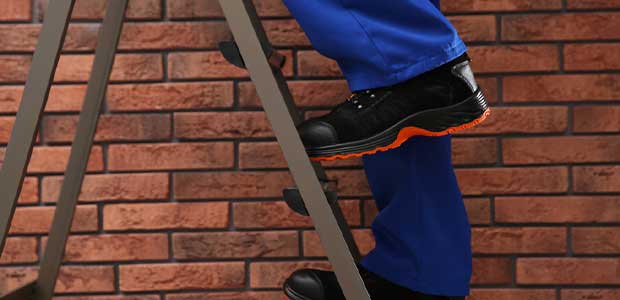
How New Technology and Innovation Make the Difference in Footwear Safety
Tech-driven innovations are the key to providing workers with footwear that is comfortable, safe and convenient.
- By Tito Warren
- Sep 01, 2022
Safety and comfort are always top of mind for employees sourcing footwear products. Thanks to new innovations, it is increasingly possible to find protective equipment that can resist common job site hazards such as slips, trips, falls or puncture wounds without compromising comfort and wearability.
While one may think of common hazards first, protecting the feet encompasses much more. Factors related to comfort, like extreme fatigue, blisters and shin splints, can be just as debilitating to not only productivity but also overall job satisfaction. And, with many foot-related workplace injuries resulting from lack of proper protective footwear, all of these factors remain equally important.
Tech-driven innovations are the key to providing workers with footwear that is comfortable, safe and convenient. Below are three key factors transforming safety footwear.
Fit is the Foundation
Safety footwear should provide security, durability and stability to the wearer, but all of those factors are compromised without the right fit. The right size and width of a work boot can help ensure all-day comfort and also minimize the chances of jobsite injury.
Today, new advancements in fitting methods utilizing AI and 3D mapping provide and store impactful information to offer a highly customized work boot fit. This includes analyzing the size, shape, arch height, volume and pressure points on each foot, as well as making an assessment of work environment conditions and safety needs.
Fit should also take into account gender-specific footwear design because men and women experience differences in foot shape and needs. Progressive footwear manufacturers are working to examine and better understand these differences and, in some cases, have introduced purpose-built options made using gender-specific lasts or patterns to ensure the best fit possible. Having the right footwear selection that considers all employees fosters safety, comfort and inclusivity.
Along with fit comes the question of style. While safety is paramount, many employees are also in search of low-profile options that look like stylish everyday shoes but include important features like toe protection, meeting jobsite safety standards and allowing for an easy transition from work to everyday activities. Developments in footwear with versatile design make work a more convenient part of life for many.
On-Demand, Digital Solutions
Providing convenient opportunities for employees to secure PPE will create safer, more effective conditions for work. Over the last two years, we’ve seen exponential movement towards goods and services being sold online to work around barriers like geographic location and health and safety concerns. As our industry continues to evolve, we should strive to meet these new standards without sacrificing the quality and care safety professionals rely on to ensure the best experience for their employees.
On-demand solutions also offer personalization to your business. Employees strive to select not only state-of-the-art equipment but equipment that is best suited for their industry type and individual role on a job site. Digital solutions empower safety professionals to present their employees with the right options for the job.
Material Quality
Innovative materials have played a significant role in the evolution of safety footwear. For example, cooling textiles that provide breathability are being used as lining in shoes and boots for employees that work in hot environments and climates. For those working in freezing temperatures, increased insulation is crucial—and paper-thin aluminum technology that works to reflect and retain body heat is being implemented in some modern safety footwear styles as a response, adding warmth without the bulk of traditional insulation materials.
Another example of a material advancement includes the use of non-metallic safety toe caps in work boots. They cut out extra weight and bulk, with laboratory and field trials affirming their ability to meet the same safety standards as steel toe caps. Additionally, lightweight outsole materials are improving safety footwear by offering superior traction for high-performance, slip-resistant results.
Today, safety footwear shopping combines both art and science to ensure that workers have the best fitting work boots for their job. Now is the right time to utilize new innovative fit solutions that support employee safety, comfort and overall wellness.
This article originally appeared in the September 1, 2022 issue of Occupational Health & Safety.